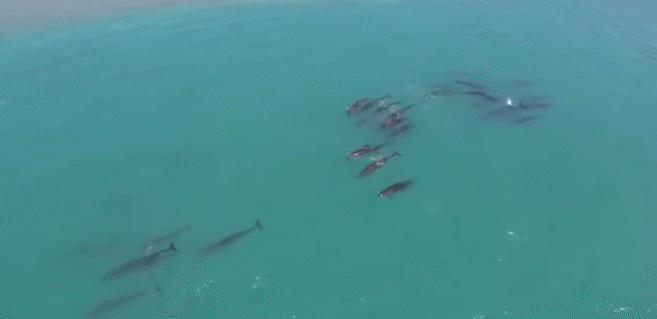On April 22nd, an incident suggesting a mass stranding was initially reported as pilot whales occurred near Drown Caye off the coast of Belize City. Authorities later clarified that the animals were likely false killer whales (Pseudorca crassidens), as they closely resemble pilot whales. Over 30 whales were involved, prompting an emergency response.
The Clearwater Marine Aquarium Research Institute Belize, in collaboration with the Belize Fisheries Department and the Ministry of Blue Economy and Marine Conservation, led the emergency response efforts. Authorities issued strict advisories for the public and all marine vessels to avoid the area immediately to prevent further distress to the whales and to ensure the safety of both the animals and the responders. Approaching the whales, whether by boat or water, was strongly discouraged, as these large marine mammals can behave unpredictably when distressed.

Teams took a cautious approach, monitoring the pod from a distance to avoid causing them stress. In a media interview, Jamal Galves of the Clearwater Marine Aquarium stated, “We’re currently examining the incidents, and I must say these occurrences have been happening annually over the last few years.” He explained that whales are generally excellent navigators, and a mass stranding often indicates underlying issues within the pod, such as illness or the disorientation of a single member, which can impact the entire group.
In a positive development, after careful monitoring and non-invasive management, the whales were observed heading south toward the English Caye channel, which Galvez believed was their original route into the area. From there, they successfully navigated back to deep-sea waters, avoiding further danger and the need for direct intervention. This outcome demonstrates both the resilience of the whales and the effectiveness of the collaborative efforts between scientific institutions and government agencies.
The successful return of the whales to deeper waters underscores the crucial role of rapid, coordinated action and public cooperation in protecting marine life. This incident reminds us of the ongoing challenges in marine conservation and the need for everyone to play their part in preserving our marine ecosystems..
Environment

False killer whales near Drown Caye make it to deep sea without incident

On April 22nd, an incident suggesting a mass stranding was initially reported as pilot whales occurred near Drown Caye off the coast of Belize City. Authorities later clarified that the animals were likely false killer whales (Pseudorca crassidens), as they closely resemble pilot whales. Over 30 whales were involved, prompting an emergency response.















